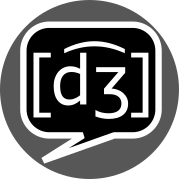- cross-posted to:
- hackernews@lemmy.smeargle.fans
- humanities@beehaw.org
- cross-posted to:
- hackernews@lemmy.smeargle.fans
- humanities@beehaw.org
In Portuguese I’ve seen also the following:
- haha - kind of “default” laugh. Onomatopoeia.
- hehe, hihi, hoho - “specific purpose” laughs. “Hehe” is smug, “hihi” is that poorly disguised laugh, and “hoho” is Santa Klaus style.
- kkkkk - the letter K is called ⟨cá⟩ [kä] in Portuguese, so this represents some really loud cackling. More to the original spirit of “lmaaaaaaaaao”.
- hueahuea - it’s H plus some random combo of U/E/A. Uncontrolled laughs. Likely the origin of the “hue hue” meme. Can be further reinforced by bashing the keyboard randomly, as “huahuaeilohauerhlçafdsaç”.
- “morri” (I died) - same spirit as Italian “muoio”.
In Italian I’ve seen mostly “ahah” and “muoio” (mentioned by the text), plus “mdr” (the text mentions it for French) at least once.
I’ve seen the kkkkkkk one in Korean as well, though they use their letter for k. Which looks a bit like a backwards F.
I’ve been learning a bit of Chinese with a native speaker I’m dating, and they use the “hahaha” style as well. Although because their language is pictorial, they have certain characters which represent only their sounds for onomatopoeia/loanwords (I think these are called “bound forms”). The Chinese 哈 is literally just the sound “ha!” So one way of representing laughter in Chinese is 哈哈哈.
plus “mdr” (the text mentions it for French) at least once.
That’s interesting considering the French word “mort” doesn’t contain the letter D. I wonder where the abbreviation is coming from.
For French it’s how ultimitchow said. For Italian (I saw it being used in Italian) it’s probably similar, something like muoio/morto/morire dal ridere (I die/dead/to die of-the laughing).
Regarding Chinese varieties, it’s less that the language is “pictorial” and more that the writing system contains both semantic and phonetic components, and often the same character can be read multiple ways. That ⟨哈⟩ for example seems to mean originally “a mouthful” or similar, but it’s being used for /ha˥/ instead for obvious reasons.
“mdr” is short for “mort de rire” which means “dead from laughter” https://en.m.wiktionary.org/wiki/mort_de_rire
Ah. That makes more sense
In the Netherlands we have the same as your first two bullets, but not the other ones. I think the only difference is that ‘hihi’ is used for giggling.
What is a bit funny is that ‘lol’ is a Dutch word that means something like ‘fun’.
In Hebrew we usually use “חחחחח” it’s actually translates as “hahahaha”, but because it’s abjad vowels aren’t written, just a default laugh For hehehe I seen people use חיחיחיחי (heeheeheehee) For the rest it’s a bit more complicated, because of the lack of vowels, but it’s usually just a combination of י ([j] or ee) and ו (oo or o or v)
That’s interesting - it makes sense that the simplest one would convey the “default” laughter. I’m a bit surprised that you guys use yod and vav in the other laughters, instead of niqqud - is it for easier typing, or is there another reason?
It’s for easier typing, because regular keyboards don’t have niqqud, and many adults in my experiences don’t even remember them (well) to actually use them. I bet if computer and phone keyboards had niqqud it would be more widely used




